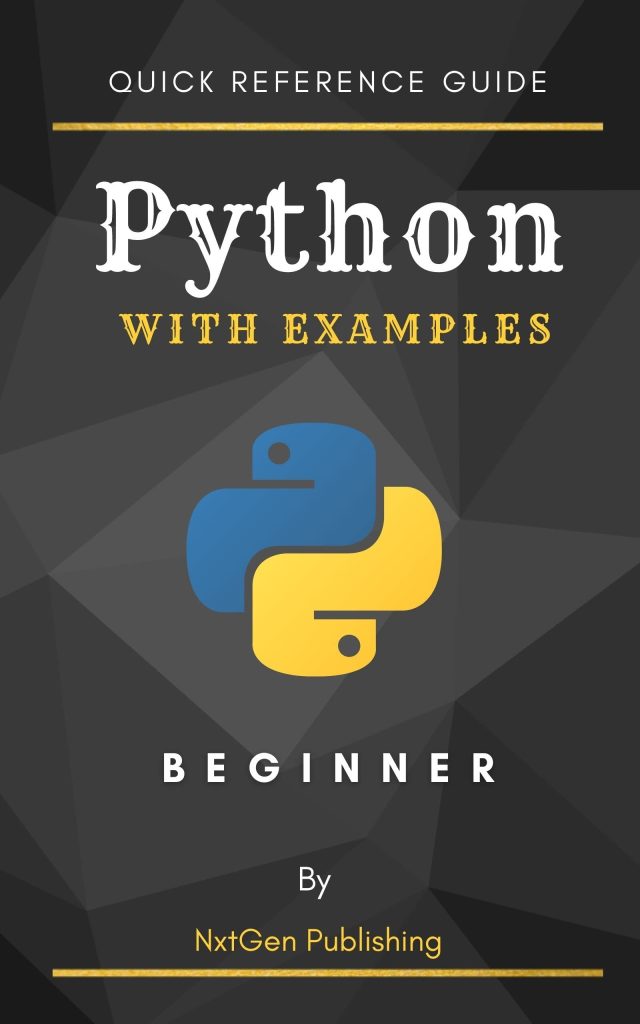
In Python, a child process is created when a running program (the parent process) uses the fork system call. Forking is a way to create a new process by duplicating the current process. The new process, which is called the child, is an exact copy of the parent process except for the returned value. It gets its own process identifier (PID) and runs at once with the parent process.
Child processes are useful for performing tasks that are separate from the main program flow, such as handling client requests in a web server or performing long-running computations. They can run independently of the parent process, and can even execute different code if needed.
The creation of a child process in Python can be done using the os.fork() function. Here’s an example of how to create a child process:
import os
pid = os.fork()
if pid > 0:
# That's the parent process
print(f'Parent process with PID {os.getpid()}')
else:
# That's the child process
print(f'Child process with PID {os.getpid()}')
After the fork, two processes will be running concurrently: the parent and the child. The os.fork() function returns twice: once in the parent process, where it returns the PID of the child process, and once in the child process, where it returns 0. This allows us to distinguish between the two processes and execute different code paths.
However, creating child processes is just one part of the equation. Managing them efficiently is important, especially when it comes to reaping their exit status once they’ve finished executing. It is important to ensure that resources are freed up and that the system doesn’t end up with orphaned or zombie processes, which can happen if child processes exit but their status is not collected by the parent.
This is where functions like os.waitpid() come into play, providing a mechanism for a parent process to wait for and retrieve the exit status of its child processes. In the next section, we’ll dive into how os.waitpid() works and how it can be used to manage child processes effectively.
Introduction to os.waitpid Function
The os.waitpid() function is a important tool in managing child processes in Python. It allows the parent process to wait for a specific child process to finish its execution and to retrieve its exit status. The function takes two arguments: the PID of the child process to wait for, and an options flag that can modify its behavior.
The basic syntax of os.waitpid() is as follows:
import os pid, status = os.waitpid(child_pid, options)
The child_pid argument is the PID of the child process that the parent wants to wait for. If set to -1, os.waitpid() waits for any child process. The options argument can be set to 0 to make the parent process block until the child process exits, or it can include flags to modify this behavior.
One common option is os.WNOHANG, which tells the parent process not to block if the child process is still running. Instead, it will return immediately, allowing the parent process to perform other tasks while periodically checking if the child has finished.
import os
# Assume child_pid is the PID of a previously forked child process
pid, status = os.waitpid(child_pid, os.WNOHANG)
if pid == 0:
# Child process is still running
print("Child process is still running.")
else:
# Child process has finished
print(f"Child process with PID {pid} has finished with status {status}.")
The return value of os.waitpid() is a tuple containing the PID of the terminated child process and its exit status. The exit status holds information about how the child process ended, such as whether it exited normally or was terminated by a signal.
To extract meaningful information from the exit status, you can use helper functions from the os module, such as os.WIFEXITED(status), which returns True if the child process exited normally, and os.WEXITSTATUS(status), which returns the exit code of the child process if it exited normally.
import os
# Assuming we have already waited for the child process and have its status
if os.WIFEXITED(status):
exit_code = os.WEXITSTATUS(status)
print(f"Child process exited with code {exit_code}.")
else:
print("Child process did not exit normally.")
Using os.waitpid() correctly ensures that the parent process can effectively manage its child processes, avoiding potential issues with orphaned or zombie processes. It is an essential function for any Python programmer who works with multiple processes.
Managing Child Processes with os.waitpid
Managing child processes involves not only creating them but also ensuring they’re properly cleaned up after they have completed their tasks. The os.waitpid() function plays a vital role in this process. Here’s a detailed look at how to use the os.waitpid() function to manage child processes effectively.
When a child process finishes execution, it becomes a zombie process until its parent reads its exit status. To prevent this, the parent process should use os.waitpid() to wait for the child’s termination and retrieve its exit status. Let’s ponder an example where we have multiple child processes, and we want to wait for all of them to finish:
import os
import time
# List to keep track of child PIDs
child_pids = []
# Create multiple child processes
for i in range(5):
pid = os.fork()
if pid > 0:
# In the parent process, append child PID to the list
child_pids.append(pid)
else:
# In child process, simulate some work with sleep
time.sleep(i)
# Child process exits with an exit code equal to its index
os._exit(i)
# In the parent process, wait for all child processes to finish
for child_pid in child_pids:
pid, status = os.waitpid(child_pid, 0)
if os.WIFEXITED(status):
exit_code = os.WEXITSTATUS(status)
print(f"Child process with PID {pid} finished with exit code {exit_code}.")
else:
print(f"Child process with PID {pid} did not exit normally.")
The example above demonstrates how the parent process can wait for multiple child processes by iterating over a list of their PIDs and using os.waitpid() for each one. The function will block the parent until the specific child process identified by the PID has finished.
Now, let’s say we want to manage child processes without blocking the parent. We can do this by using the os.WNOHANG option. This allows the parent process to continue performing other tasks while periodically checking on its child processes:
import os
import time
# List to keep track of child PIDs
child_pids = []
# Function to check and clean up finished child processes
def cleanup_children():
cleaned_up = []
for child_pid in child_pids:
pid, status = os.waitpid(child_pid, os.WNOHANG)
if pid > 0:
# Child process has finished
cleaned_up.append(child_pid)
if os.WIFEXITED(status):
exit_code = os.WEXITSTATUS(status)
print(f"Child process {pid} cleaned up with exit code {exit_code}.")
else:
print(f"Child process {pid} did not exit normally.")
return [pid for pid in child_pids if pid not in cleaned_up]
# Create multiple child processes
for i in range(3):
pid = os.fork()
if pid > 0:
# In the parent process, append child PID to the list
child_pids.append(pid)
else:
# In child process, simulate some work with sleep
time.sleep(i)
# Child process exits with an exit code equal to its index
os._exit(i)
# Main loop in parent process
while child_pids:
# Perform other tasks here (e.g., handling client requests)
# ...
# Periodically clean up finished child processes
child_pids = cleanup_children()
# Sleep for a short time before checking again
time.sleep(0.5)
In the above example, we define a cleanup_children() function that uses os.waitpid() with os.WNOHANG to check for finished child processes without blocking. This function is then called periodically in the main loop of the parent process. The use of os.WNOHANG ensures that the parent process is not held up waiting for a specific child to finish, which is useful in scenarios where the parent has other tasks to perform, such as handling client requests in a web server.
By using os.waitpid(), Python programmers can effectively manage child processes, ensuring that resources are freed up and avoiding problems associated with orphaned or zombie processes. That’s an important aspect of writing robust and reliable multi-process applications in Python.
Advanced Techniques and Best Practices
Best Practices for Child Process Management
When working with child processes, it’s essential to follow best practices to ensure that your program functions slickly and competently. Here are some advanced techniques and best practices to consider:
- Use a signal handler for SIGCHLD: By default, when a child process terminates, the parent receives a SIGCHLD signal. You can set a signal handler using the
signalmodule to catch this signal and callos.waitpid()to reap the child process immediately.
import os
import signal
# Signal handler for SIGCHLD
def sigchld_handler(signum, frame):
while True:
try:
pid, status = os.waitpid(-1, os.WNOHANG)
if pid == 0:
# No more zombie processes
break
except ChildProcessError:
# No child processes
break
# Set the signal handler for SIGCHLD
signal.signal(signal.SIGCHLD, sigchld_handler)
# Fork a child process (example purpose)
pid = os.fork()
if pid == 0:
# Child process
os._exit(0)
- Avoid blocking calls: Blocking calls like
os.wait()can halt your parent process. Usingos.waitpid()withos.WNOHANGor handling SIGCHLD allows the parent to remain responsive. - Handle EINTR errors: System calls like
os.waitpid()can raise anInterruptedError(EINTR) if a signal is caught during their execution. Ensure to handle this exception and retry the call if needed.
import os
try:
pid, status = os.waitpid(-1, 0)
except InterruptedError:
# Retry or handle interruption appropriately
pass
- Use process pools or executors: For more complex scenarios, think using higher-level abstractions like
multiprocessing.Poolorconcurrent.futures.ProcessPoolExecutor, which can manage a pool of worker processes for you.
from concurrent.futures import ProcessPoolExecutor
def worker_function(arg):
# Perform work and return result
return arg * 2
with ProcessPoolExecutor(max_workers=4) as executor:
future = executor.submit(worker_function, 10)
result = future.result()
print(result) # Output: 20
- Cleanup resources: Always ensure that any resources (e.g., file descriptors, network connections) are properly cleaned up in both the parent and child processes to avoid leaks.
Incorporating these advanced techniques and best practices in your Python programs will help you manage child processes effectively and avoid common pitfalls that can lead to performance issues or unexpected behavior.






